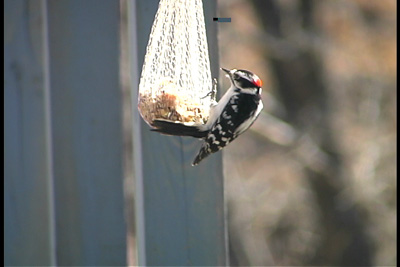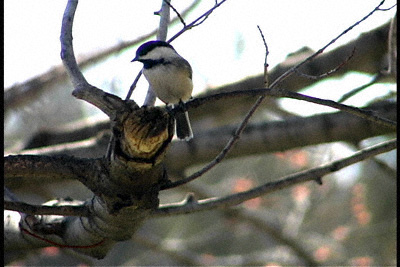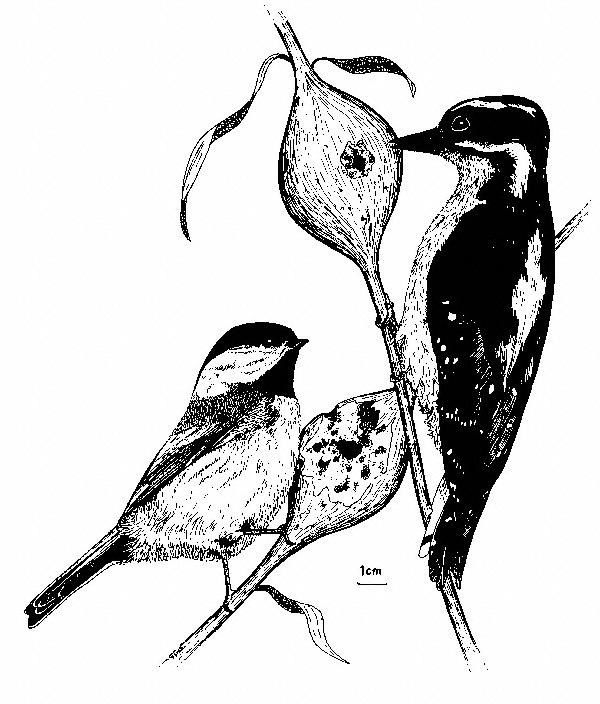Avian Predators of Eurosta

The downy woodpecker is an important predator of Eurosta larvae in some areas. In winter, when the woodpecker’s other food becomes scarce, the downy turns to feeding on the larvae overwintering within ball galls. At some sites in central Pennsylvania predation rates sometimes exceed 60%. Research has shown that the woodpecker preferentially chooses to attack larger galls. This produces natural selection for small gall size at sites where woodpecker predation is heavy. Since, another natural enemy of the Eurosta larva, the parasitoid wasp Eurytoma gigantea, selects galls with small diameter, the selection from the woodpecker and Eurytoma together can create a net selection for intermediate sized galls. Some researchers suggested that downy woodpeckers tap on Eurosta galls to locate the gall fly’s emergence tunnel (which the gall fly excavates prior to entering diapause in the autumn). Field experiments have shown that downy woodpeckers use the presence of an emergence tunnel to determine whether a gall contains an Eurosta larva. Other researchers have found that when birds attacked galls containing Eurytoma obtusiventris, they did not eat the wasp larva, even though it was exposed. The authors suggest that the wasp may be distasteful due to the presence of plant resin.

The Black-capped Chickadee is another common avian predator of Eurosta larvae. At some sites in southern Ontario, chickadees attack up to 50% of galls. Since chickadee’s lack the powerful chisel-like beak of woodpeckers, they make large rough holes in the sides of Eurosta galls by grabbing bits of the gall and pulling them apart
